What do low hematocrit levels mean. Low Hematocrit Levels: Understanding Hematocrit and Hemoglobin in Blood Tests
What are hematocrit levels. How are hematocrit tests performed. What do low hematocrit levels indicate. Why is hemoglobin important in blood tests. How do hematocrit and hemoglobin relate to overall health.
Understanding Hematocrit: The Measure of Red Blood Cell Volume
Hematocrit (HCT) is a crucial blood test that measures the proportion of red blood cells in your blood. This test, also known as packed cell volume (PCV), provides valuable insights into your overall health and can indicate various medical conditions.
To perform a hematocrit test, a blood sample is taken and spun at high speed in a centrifuge. This process separates the red blood cells from other blood components, allowing healthcare professionals to calculate the percentage of red blood cells in your blood volume.
Why is Hematocrit Important?
Hematocrit levels serve as a key indicator of your body’s ability to transport oxygen throughout your system. Red blood cells contain hemoglobin, the protein responsible for carrying oxygen to your tissues. By measuring the proportion of red blood cells, doctors can assess your body’s oxygen-carrying capacity and overall blood health.
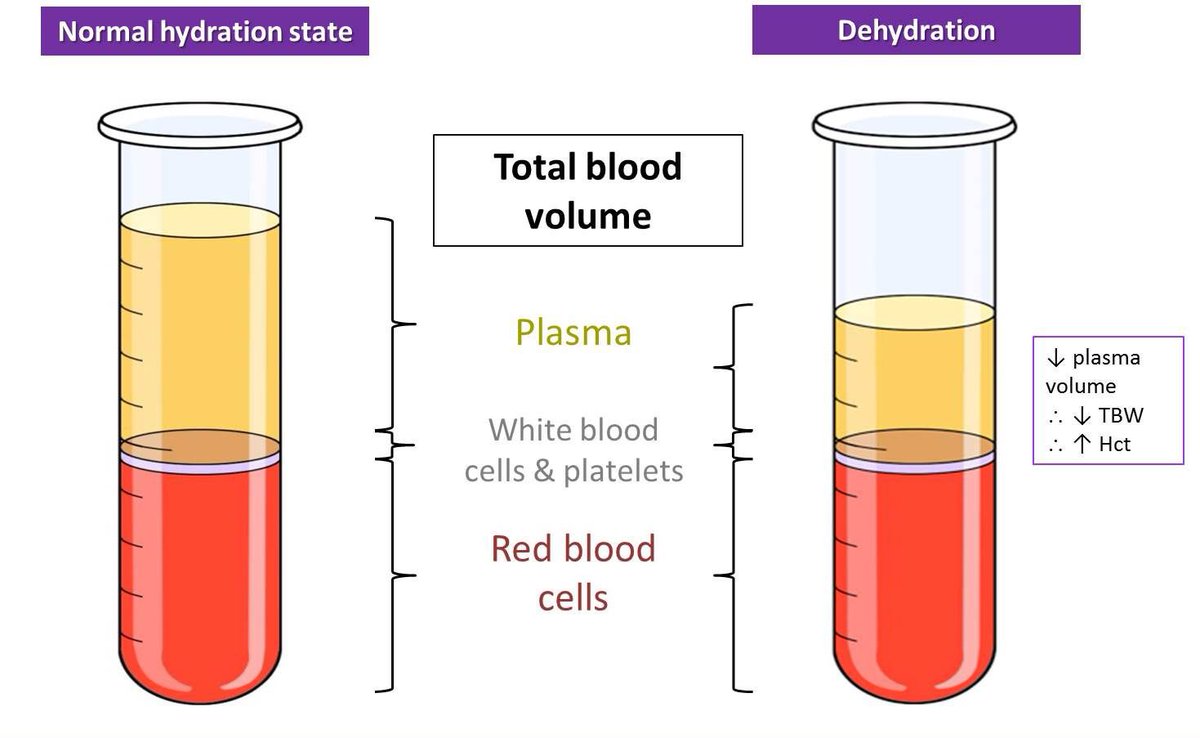
Normal Hematocrit Ranges: What’s Considered Healthy?
Hematocrit levels vary depending on age, gender, and other factors. Generally, normal hematocrit ranges are:
- Adult men: 38.3% to 48.6%
- Adult women: 35.5% to 44.9%
- Children: 36% to 40%
- Newborns: 45% to 61%
It’s important to note that these ranges may differ slightly between laboratories and healthcare providers. Always consult with your doctor to interpret your specific results.
Low Hematocrit Levels: Causes and Implications
Low hematocrit levels, also known as anemia, can occur due to various reasons. Understanding the potential causes can help in diagnosing and treating underlying health issues.
Common Causes of Low Hematocrit
- Blood loss (acute or chronic)
- Nutritional deficiencies (iron, vitamin B12, folate)
- Bone marrow disorders
- Chronic diseases (kidney disease, cancer, autoimmune disorders)
- Pregnancy
- Overhydration
When hematocrit levels fall below the normal range, it may indicate that your body isn’t producing enough red blood cells or is losing them faster than they can be replaced.

Symptoms of Low Hematocrit
Individuals with low hematocrit levels may experience various symptoms, including:
- Fatigue and weakness
- Shortness of breath
- Dizziness or lightheadedness
- Pale skin
- Rapid heartbeat
- Cold hands and feet
- Chest pain
If you’re experiencing these symptoms, it’s crucial to consult with a healthcare professional for proper evaluation and treatment.
High Hematocrit Levels: Understanding Polycythemia
While low hematocrit levels are more commonly discussed, high levels can also indicate health issues. Polycythemia, a condition characterized by an excess of red blood cells, can lead to various complications if left untreated.
Causes of High Hematocrit
- Dehydration
- Living at high altitudes
- Smoking
- Certain lung diseases
- Polycythemia vera (a rare blood disorder)
- Some types of heart disease
High hematocrit levels can increase blood viscosity, potentially leading to blood clots, stroke, or heart attack. Regular monitoring and appropriate treatment are essential for managing this condition.
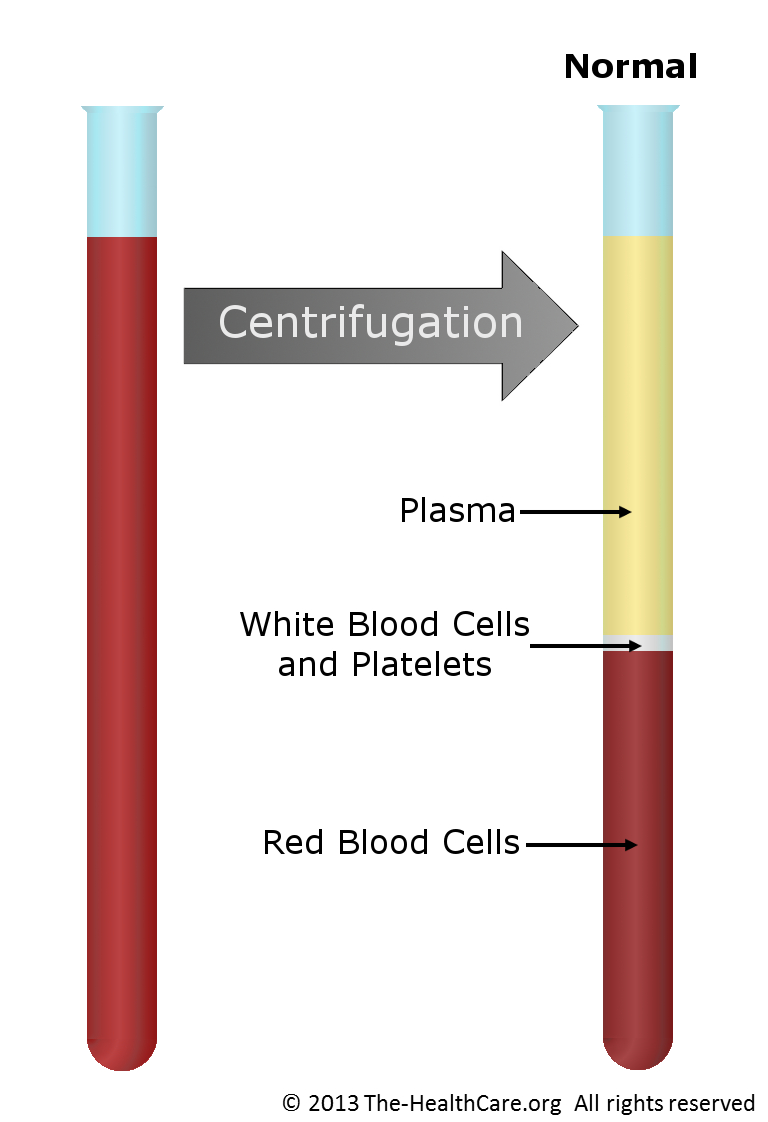
The Relationship Between Hematocrit and Hemoglobin
Hematocrit and hemoglobin are closely related blood measurements, often performed together as part of a complete blood count (CBC). While hematocrit measures the proportion of red blood cells, hemoglobin quantifies the oxygen-carrying protein within those cells.
How Are Hematocrit and Hemoglobin Related?
Typically, hematocrit values are about three times the hemoglobin concentration. For example, if your hemoglobin level is 15 g/dL, your hematocrit would be approximately 45%. This relationship helps healthcare providers cross-check results and gain a more comprehensive understanding of your blood health.
Hematocrit Testing: What to Expect
A hematocrit test is a simple and routine blood test that can provide valuable information about your health. Understanding the process can help alleviate any concerns you may have about the procedure.
The Hematocrit Test Process
- A healthcare professional will clean the area where blood will be drawn, usually from a vein in your arm.
- A small needle is inserted to collect a blood sample.
- The sample is placed in a tube and sent to a laboratory for analysis.
- The blood is spun in a centrifuge to separate the components.
- The proportion of red blood cells is measured and reported as a percentage.
The entire process usually takes just a few minutes, and you can typically resume normal activities immediately after the test.
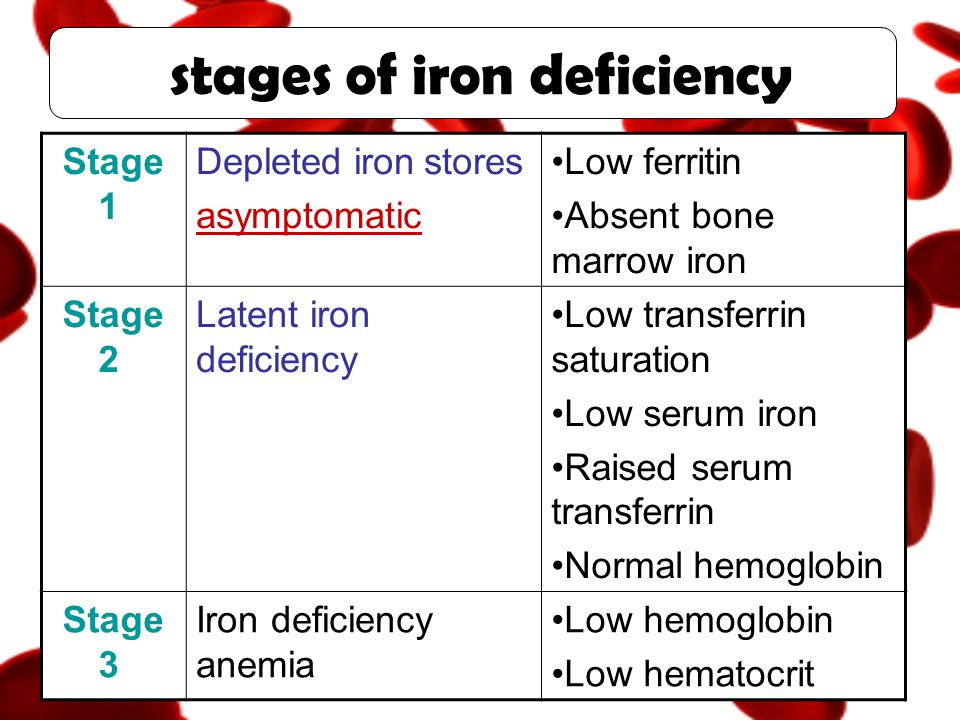
Interpreting Hematocrit Results: Beyond the Numbers
While hematocrit levels provide crucial information about your blood health, it’s essential to interpret these results in conjunction with other factors and tests. Your healthcare provider will consider various elements when analyzing your hematocrit results.
Factors Influencing Hematocrit Interpretation
- Age and gender
- Overall health status
- Medications you’re taking
- Recent blood loss or transfusions
- Pregnancy status
- Altitude of residence
- Hydration levels
Remember that a single hematocrit test result may not provide a complete picture of your health. Your doctor may recommend additional tests or repeat the hematocrit test to monitor changes over time.
Treatment Options for Abnormal Hematocrit Levels
If your hematocrit levels are outside the normal range, your healthcare provider will work with you to determine the underlying cause and develop an appropriate treatment plan.
Treating Low Hematocrit (Anemia)
- Iron supplements or dietary changes for iron-deficiency anemia
- Vitamin B12 injections for pernicious anemia
- Medications to stimulate red blood cell production
- Blood transfusions for severe cases
- Treatment of underlying conditions (e.g., kidney disease, cancer)
Managing High Hematocrit (Polycythemia)
- Phlebotomy (removal of blood) to reduce red blood cell count
- Hydration to dilute blood concentration
- Medications to suppress red blood cell production
- Lifestyle changes (e.g., quitting smoking, managing cardiovascular health)
- Treatment of underlying conditions
The specific treatment approach will depend on the severity of your condition, underlying causes, and overall health status.

Maintaining Healthy Hematocrit Levels: Lifestyle Factors
While some factors affecting hematocrit levels are beyond your control, there are several lifestyle choices you can make to support healthy blood cell production and maintain optimal hematocrit levels.
Tips for Promoting Healthy Hematocrit Levels
- Eat a balanced diet rich in iron, vitamin B12, and folate
- Stay hydrated by drinking plenty of water
- Exercise regularly to stimulate blood cell production
- Avoid smoking and excessive alcohol consumption
- Manage stress through relaxation techniques or meditation
- Get regular check-ups and follow your doctor’s recommendations
By adopting these healthy habits, you can support your body’s ability to maintain appropriate hematocrit levels and overall blood health.
The Future of Hematocrit Testing: Emerging Technologies
As medical technology advances, new methods for measuring hematocrit and assessing blood health are being developed. These innovations aim to provide faster, more accurate, and less invasive ways to monitor hematocrit levels.

Promising Developments in Hematocrit Testing
- Point-of-care testing devices for rapid results
- Non-invasive optical sensors for continuous monitoring
- Microfluidic devices for analyzing small blood samples
- Artificial intelligence algorithms for improved result interpretation
- Wearable technology for real-time hematocrit monitoring
These advancements hold the potential to revolutionize how we measure and monitor hematocrit levels, leading to more personalized and efficient healthcare.
Understanding hematocrit levels and their implications is crucial for maintaining optimal health. By staying informed about your blood health and working closely with your healthcare provider, you can take proactive steps to address any issues and support your overall well-being. Regular monitoring, healthy lifestyle choices, and timely medical intervention when necessary can help ensure that your hematocrit levels remain within the healthy range, contributing to your body’s efficient oxygen delivery and overall function.

Hematocrit | Spectrum Health Lakeland
Does this test have other names?
HCT, packed cell volume, PCV
What is this test?
This test measures how much of your blood is made up of red blood cells.
Normal blood contains white blood cells, red blood cells, platelets, and the fluid portion called plasma. The word hematocrit means to separate blood. In this test, your red blood cells are separated from the rest of your blood so they can be measured.
Your hematocrit (HCT) shows whether you have a normal amount of red blood cells, too many, or too few. To measure your HCT, your blood sample is spun at a high speed to separate the red blood cells.
Why do I need this test?
You may need this test if it is part of routine blood testing. You may also need your HCT checked before having surgery or if your healthcare provider suspects you have a red blood cell disorder. Too many red blood cells is called polycythemia. Too few red blood cells is called anemia.
Polycythemia may cause:
Heart attack
Stroke
Headache
Blurred vision
Itching
Dizziness
Anemia can be caused by blood loss, your body making fewer red blood cells, or increased destruction of red blood cells. Symptoms may include:
Shortness of breath
Fatigue
Dizziness
Headache
Cold, pale skin
Chest pain
What other tests might I have along with this test?
Your healthcare provider may also order a complete blood count (CBC), which is a blood test that counts all the different types of cells in your blood.+measures+how+much+space+in+the+blood+is+occupied+by+red+blood+cells..jpg)
Your healthcare provider may also order a test that measures your hemoglobin to find out how much oxygen your red blood cells are carrying.
What do my test results mean?
Test results may vary depending on your age, gender, health history, and other things. Your test results may be different depending on the lab used. They may not mean you have a problem. Ask your healthcare provider what your test results mean for you.
Results are given as a percentage. Normal HCT values are different for men, women, and children. Normal values are:
If your HCT is high, it may mean your body is making too many red blood cells. Your HCT may also be high if your plasma or blood volume is too low. This can happen when you are dehydrated or in shock.
If your HCT is low, it means you may have:
How is this test done?
The test is done with a blood sample. A needle is used to draw blood from a vein in your arm or hand.
Does this test pose any risks?
Having a blood test with a needle carries some risks. These include bleeding, infection, bruising, and feeling lightheaded. When the needle pricks your arm or hand, you may feel a slight sting or pain. Afterward, the site may be sore.
These include bleeding, infection, bruising, and feeling lightheaded. When the needle pricks your arm or hand, you may feel a slight sting or pain. Afterward, the site may be sore.
What might affect my test results?
Living at a high altitude may cause your HCT to be higher than normal. Being pregnant or being older than age 60 can cause your HCT to be lower than normal.
Certain medicines can also affect your results.
How do I get ready for this test?
You don’t need to prepare for this test. Be sure your healthcare provider knows about all medicines, herbs, vitamins, and supplements you are taking. This includes medicines that don’t need a prescription and any illegal drugs you may use.
Hematocrit
Does this test have other names?
HCT, packed cell volume, PCV
What is this test?
This test measures how much of your blood is made up of red blood cells.
Normal blood contains white blood cells, red blood cells, platelets, and the fluid portion called plasma. The word hematocrit means to separate blood. In this test, your red blood cells are separated from the rest of your blood so they can be measured.
The word hematocrit means to separate blood. In this test, your red blood cells are separated from the rest of your blood so they can be measured.
Your hematocrit (HCT) shows whether you have a normal amount of red blood cells, too many, or too few. To measure your HCT, your blood sample is spun at a high speed to separate the red blood cells.
Why do I need this test?
You may need this test if it is part of routine blood testing. You may also need your HCT checked before having surgery or if your healthcare provider suspects you have a red blood cell disorder. Too many red blood cells is called polycythemia. Too few red blood cells is called anemia.
Polycythemia may cause:
-
Heart attack
-
Stroke
-
Headache
-
Blurred vision
-
Itching
-
Dizziness
Anemia can be caused by blood loss, your body making fewer red blood cells, or increased destruction of red blood cells.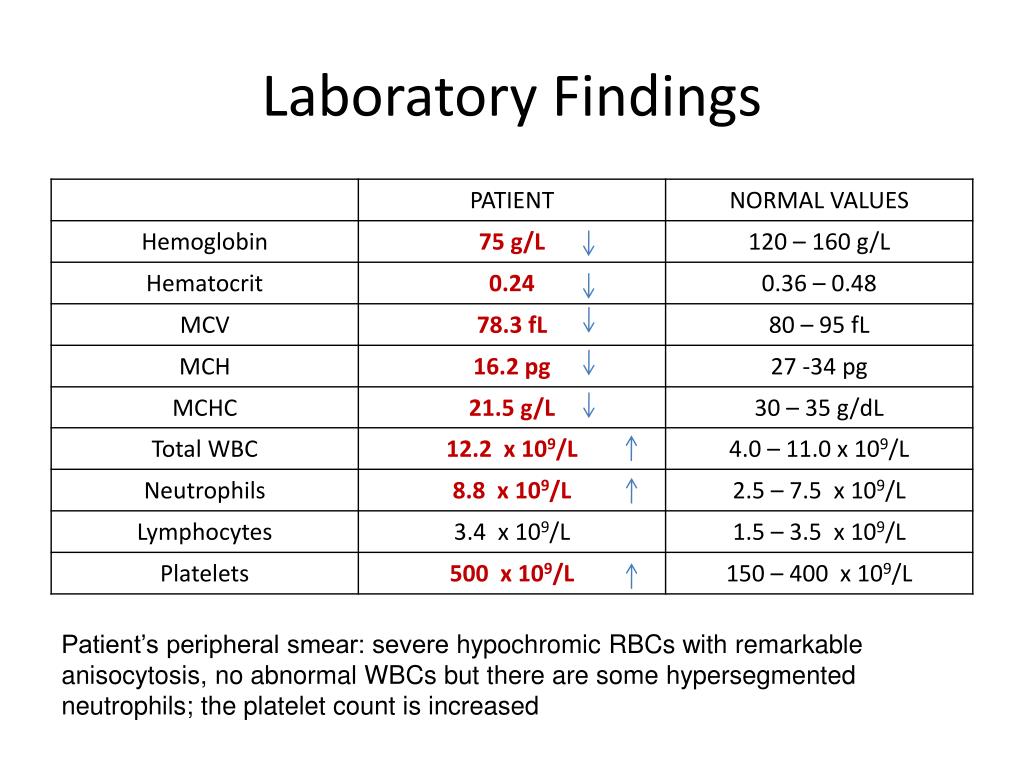 Symptoms may include:
Symptoms may include:
-
Shortness of breath
-
Fatigue
-
Dizziness
-
Headache
-
Cold, pale skin
-
Chest pain
What other tests might I have along with this test?
Your healthcare provider may also order a complete blood count (CBC), which is a blood test that counts all the different types of cells in your blood.
Your healthcare provider may also order a test that measures your hemoglobin to find out how much oxygen your red blood cells are carrying.
What do my test results mean?
Test results may vary depending on your age, gender, health history, and other things. Your test results may be different depending on the lab used. They may not mean you have a problem. Ask your healthcare provider what your test results mean for you.
Ask your healthcare provider what your test results mean for you.
Results are given as a percentage. Normal HCT values are different for men, women, and children. Normal values are:
If your HCT is high, it may mean your body is making too many red blood cells. Your HCT may also be high if your plasma or blood volume is too low. This can happen when you are dehydrated or in shock.
If your HCT is low, it means you may have:
How is this test done?
The test is done with a blood sample. A needle is used to draw blood from a vein in your arm or hand.
Does this test pose any risks?
Having a blood test with a needle carries some risks. These include bleeding, infection, bruising, and feeling lightheaded. When the needle pricks your arm or hand, you may feel a slight sting or pain. Afterward, the site may be sore.
What might affect my test results?
Living at a high altitude may cause your HCT to be higher than normal. Being pregnant or being older than age 60 can cause your HCT to be lower than normal.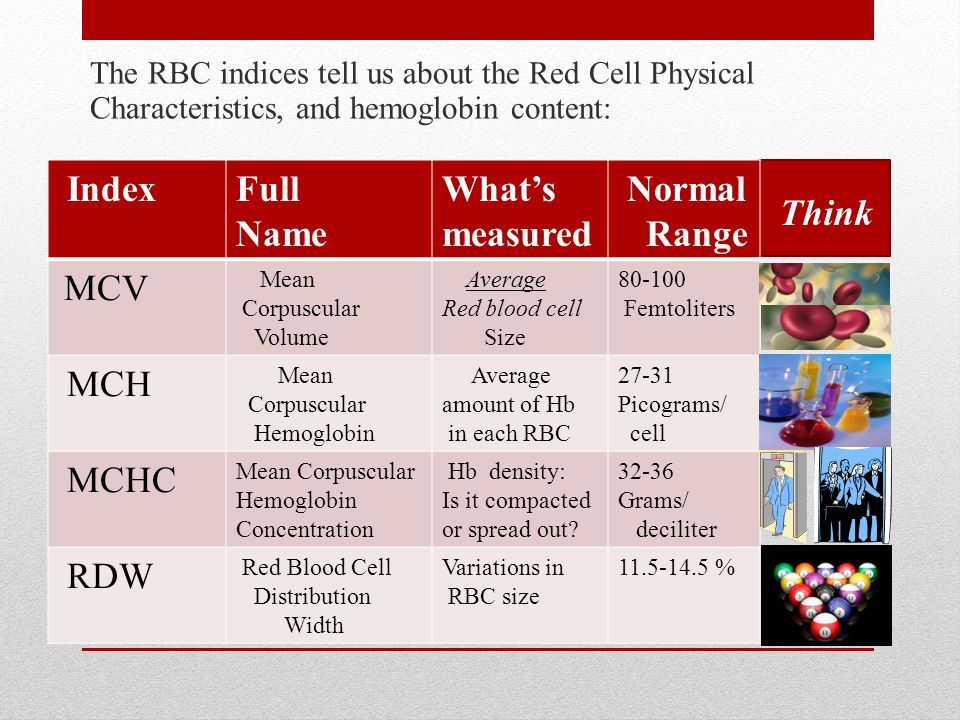
Certain medicines can also affect your results.
How do I get ready for this test?
You don’t need to prepare for this test. Be sure your healthcare provider knows about all medicines, herbs, vitamins, and supplements you are taking. This includes medicines that don’t need a prescription and any illegal drugs you may use.
Online Medical Reviewer:
Chad Haldeman-Englert MD
Online Medical Reviewer:
Raymond Turley Jr PA-C
Online Medical Reviewer:
Tara Novick BSN MSN
Date Last Reviewed:
9/1/2022
© 2000-2023 The StayWell Company, LLC. All rights reserved. This information is not intended as a substitute for professional medical care. Always follow your healthcare professional’s instructions.
Deciphering the general blood test in Moscow
The expectant mother will take this analysis several times throughout the entire period of gestation so that the doctor can monitor her health, as well as the health of the unborn baby. A woman also needs to know what the main indicators mean and what their values \u200b\u200bare acceptable.
A woman also needs to know what the main indicators mean and what their values \u200b\u200bare acceptable.
RBC – erythrocyte count
These are red blood cells, which include hemoglobin, and it contains an iron-containing protein. These cells transport oxygen from the lungs to other tissues throughout the body, after which carbon dioxide is removed in the opposite direction.
The following indicators are normal during pregnancy: one liter contains (3.5-5.6) x 10 12 cells.
As a rule, the main reason for the increase in the content of red blood cells in the blood is that the body loses a lot of fluid (sweating, fever, vomiting, indigestion). To reduce this marker in the blood, you need to help the body return the fluid that it loses. To do this, it is recommended to drink at least two liters of water daily.
Red blood cell count can also be increased in people who smoke, often experience stress, and are overweight.
The level of this marker may decrease if anemia occurs. The vitamins that a doctor ascribes to a pregnant woman contain all the vitamins necessary for the body, so you need to take them from the very first days of pregnancy.
- MCV (average red cell volume) – 80-100 fl. This indicator determines the type of anemia, if any.
- MSN (hemoglobin in an erythrocyte on average) – 26-34 pg. What type of anemia is determined.
- MCHC (average hemoglobin concentration) – 31-36 g / dl. Shows how impaired hemoglobin formation is. If this indicator is lowered, while erythrocytes and hemoglobin show normal values, then the study was carried out incorrectly, in the same way, if it is higher.
RTC – reticulocyte count
Young erythrocytes. Normally, this marker should have a value of 0.2-1.5%. During pregnancy, 0.12-2.05% is acceptable, but only if the woman has no pathologies.
When the destruction of red blood cells in the blood begins, the active production of a huge number of reticulocytes is stimulated.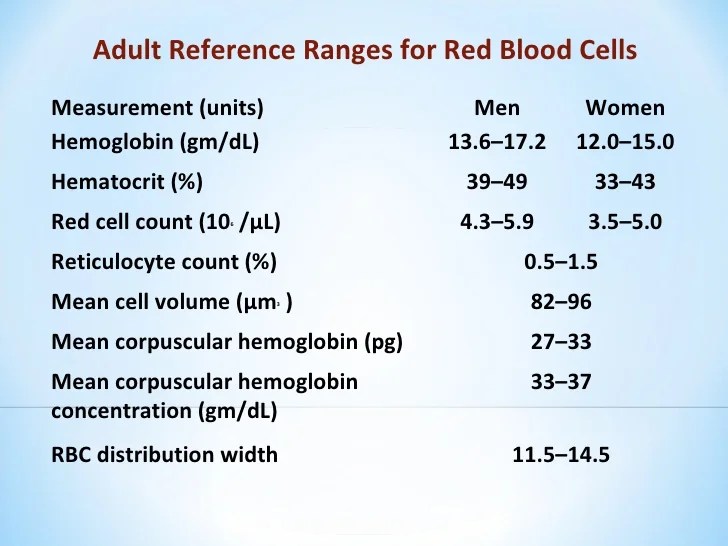 These cells, when mature, will become red blood cells.
These cells, when mature, will become red blood cells.
When this marker has a high value in the general blood test, this indicates the effectiveness of anemia prevention when there is a deficiency of iron or folic acid. The drugs prescribed by the doctor increase the number of red blood cells and reticulocytes, hemoglobin, if the pregnant woman has iron deficiency anemia.
In cases where the expectant mother does not undergo such treatment, an increased level of this marker indicates a violation. These can be diseases such as hemolytic anemia, malaria, etc.
A slight increase in this marker in the blood during pregnancy is considered acceptable. The level of the indicator may increase due to recent bleeding, and the body attempts to replenish the lost blood, so it begins to actively produce young red blood cells.
It may drop to zero if there are serious blood disorders. Also, indicators may decrease in the presence of disorders in the work of the kidneys.
Hb – hemoglobin level
From the erythrocyte, hemoglobin, bound with oxygen, is sent to tissues, where oxygen is released and hemoglobin and carbon dioxide are bound, after which it is transferred back to the lungs.
The normal hemoglobin level for a woman in position is at least 110 g/l. The reasons why the indicator decreases are quite natural: the volume of blood circulation increases, and the concentration of red blood cells does not change. It is acceptable if during the period of gestation, hemoglobin changes within the following trimester limits:
- first: 112-160 g/l;
- second: 108-144 g/l;
- third: 100-140 g/l.
If hemoglobin is low, there may be such unpleasant consequences: premature birth, high blood loss, oxygen starvation of the fetus or developmental delay, lack of iron.
That is why the doctor can prescribe you to take vitamins from the first days of gestation.
To ensure normal hemoglobin levels will help the correct diet, which should include beef, white meat, buckwheat, pomegranate, pistachios, almonds, buckwheat porridge, green apple. It is advisable to eat foods that contain calcium and iron together, because iron is less absorbed.
To treat more complex iron deficiency anemia, ascorbic and folic acid, iron-containing agents are prescribed. If anemia is of a different nature, then the treatment is prescribed individually.
The reasons why this indicator may increase are different: smoking, high physical activity, lack of folic acid, diabetes mellitus, intestinal obstruction, loss of a large amount of fluid by the body, hypervitaminosis, hereditary factor, etc.
An increase in hemoglobin by several units is quite acceptable, which can be the result of long walks.
CPU – color indicator
Indicates how much hemoglobin is in one red blood cell. It is permissible that in a woman during gestation, this indicator does not exceed 0. 85-1.1.
85-1.1.
If the CP is below 0.8 (hypochromia), this indicates a lack of iron in the body. If the CPU is above 1.1 (hyperchromia), the body is deficient in vitamins B9and B 12.
Ht – hematocrit level
The ratio between the volume of erythrocytes and total blood volume. The marker tells how severe the anemia is.
Normally, it should be at the level of 31-49%. The level of this indicator decreases when a woman has anemia, bleeding, red blood cells are rapidly destroyed during gestation. Pregnancy can cause a decrease in the level of the indicator. It is quite normal when there is an uneven increase in the volume of circulating blood and the number of red blood cells.
Frequent vomiting that causes dehydration, swelling, excessive consumption of salty food, the level of red blood cells rises, as a result of which the hematocrit level may become higher than normal.
PLT – platelet level
This marker is of high importance because blood clotting depends on its level. When the platelet count is low, there is a high risk of bleeding during labor; when the platelet count is high, there is an increased risk that blood clots form in the veins or arteries.
When the platelet count is low, there is a high risk of bleeding during labor; when the platelet count is high, there is an increased risk that blood clots form in the veins or arteries.
The norm is (180-320) x 10 9 platelets in one liter of blood.
A pregnant woman needs to undergo coagulograms, which makes it possible to detect blood clotting disorders. Small deviations in the number of platelets from normal values are acceptable and should not cause concern. To more clearly understand the picture of changes in this marker, you need to donate blood for analysis several times.
It is also important to know this point: with frequent vomiting and indigestion, the body loses a lot of fluid, so the blood thickens. That is why you need to drink more water.
Reduces the content of these cells in the blood unbalanced diet, various viruses and infections, bleeding, allergies. To normalize platelet counts, you need to properly and balanced nutrition, not to delay the treatment of diseases.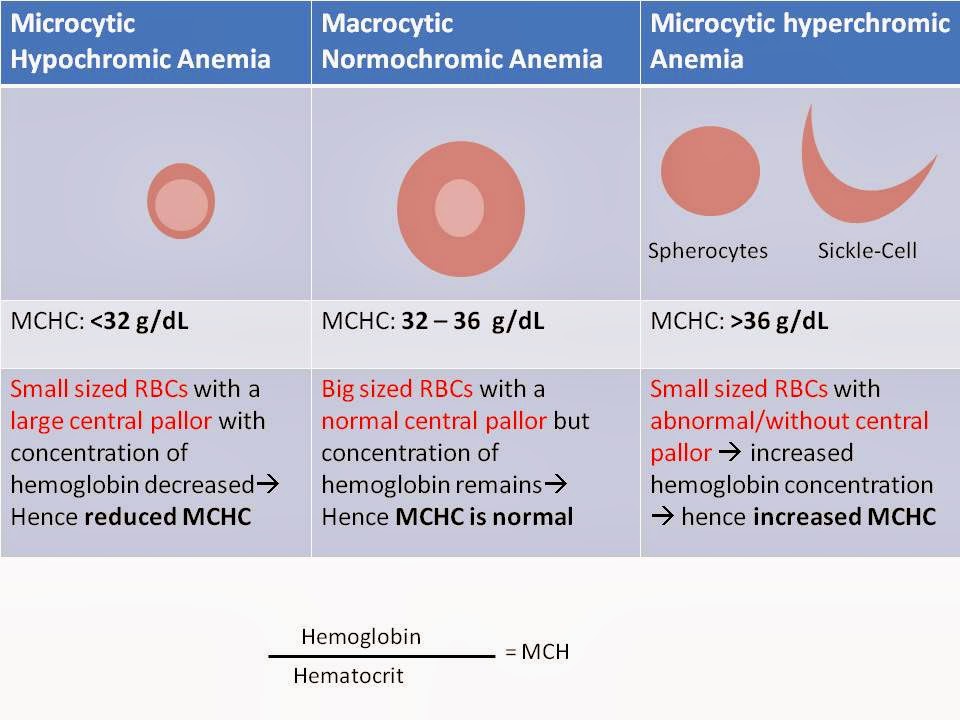
The hematologist will select the therapy in cases where the tests showed a significant deviation from the norm.
WBC – WBC
White blood cells are part of the immune system. They provide reliable protection of the body from germs, viruses and infections. If their number rises, then the body has an infection or inflammatory process.
In the first trimester, the following are considered normal: (4.0-9.0) x ∙ 10 9 cells/l, in the second trimester: up to 11.0 x 10 9 cells/l, in the third: up to 15.0 x 10 9 cells/l. Such changes can be explained by an increase in the level of protection of the body of a pregnant woman.
The content of leukocytes in the blood of a woman who bears a fetus can increase significantly in such conditions: sexual infections, influenza, bronchitis, pneumonia, otitis media, sinusitis, renal colic, cystitis, allergies.
To establish why this marker has increased, an additional examination is prescribed: a detailed blood test, urine culture, ultrasound, etc. It is extremely important to quickly establish why this happened and eliminate the cause in order to exclude a threat to the health of the expectant mother and fetus .
It is extremely important to quickly establish why this happened and eliminate the cause in order to exclude a threat to the health of the expectant mother and fetus .
In cases where the leukocyte count of a woman in the position has decreased, she has reduced immunity, the body lacks vitamins and minerals, it is depleted, nutrition cannot provide the required substances. The reason may be in autoimmune diseases, hyperfunction of the thyroid gland and other disorders.
There are several types of leukocytes, if any of them has an increased content, this is a signal of the development of an inflammatory process in the body.
MON – the percentage of monocytes in the total number of leukocytes
This marker is the largest of all types of leukocytes.
The content of 1-11% in the total volume of leukocytes is considered the norm.
If this indicator is above the norm, then an infection has entered the body, as a rule, it is SARS, acute respiratory infections, mononucleosis.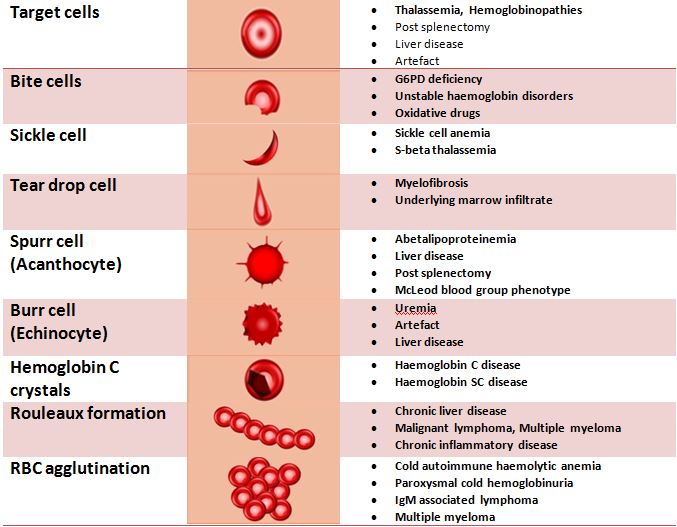
Mononucleosis is also indicated by enlarged lymph nodes, especially those in the neck, and organs such as the liver and spleen may also be enlarged. High chance of hepatitis or jaundice. Also often there is such an unpleasant disease as cystitis.
In a mild form, mononucleosis is characterized by the following manifestations: swelling of the tissues of the adenoids, inflammation of the tonsils, sore throat when swallowing, fever and loss of appetite. Very often, the sluggish course of the disease is mistaken for the flu or sore throat.
To confirm the diagnosis, you will need to do a blood test for this disease, they also take a swab from the throat to determine the nature of the pain (it may be tonsillitis or pharyngitis, then the growth of streptococci in the throat is diagnosed).
With a reduced number of monocytes in a woman during gestation, exhaustion of the body is diagnosed. To normalize the condition, it is necessary to provide a balanced diet, good rest (sleep for at least 8 hours). You also need to spend more time outdoors and eliminate stress.
You also need to spend more time outdoors and eliminate stress.
BA – percentage of basophils from the total number of leukocytes
One of the types of leukocytes, which should be 0-1% of the total amount of leukocytes in the blood.
When there is an allergy, infectious diseases or poisoning, their number will be higher than normal. It also happens when the level of thyroid hormones is reduced, there are gastrointestinal diseases or blood formation is disturbed.
As a rule, the level of basophils during pregnancy increases due to allergic rhinitis or drug allergy. To determine the existence of an allergic reaction, a blood test for immunoglobulin is taken. In addition, you need to avoid flowering plants, constantly carry out wet cleaning at home, and also avoid eating foods that can cause allergies.
EO – the percentage of eosinophils in the total number of leukocytes
Another type of leukocyte that reacts to an allergic reaction.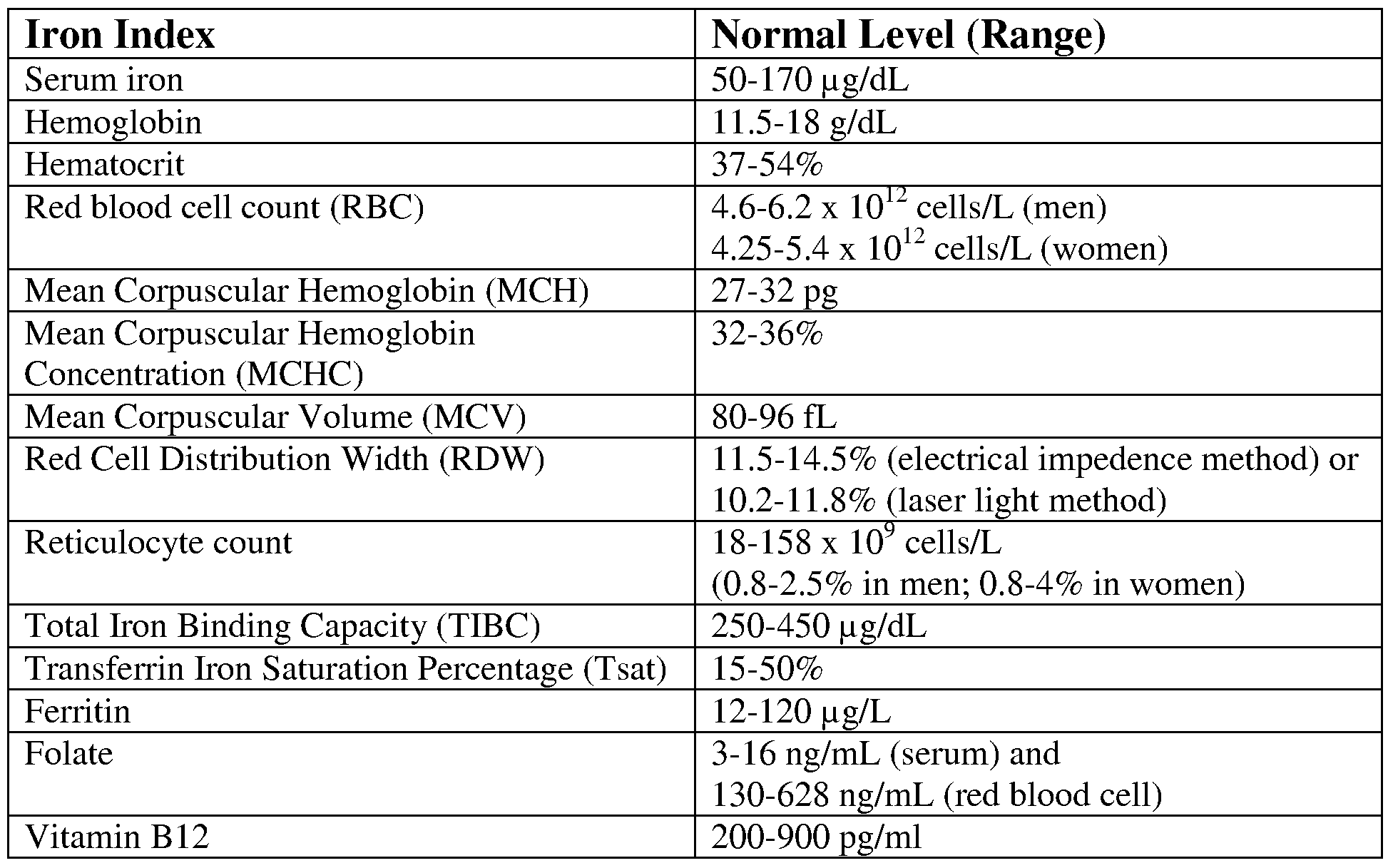 Normal are 0-5% of the total number of leukocytes.
Normal are 0-5% of the total number of leukocytes.
The content of eosinophils increases when skin and respiratory tract allergies are present. If the number of eosinophils increases during the period of gestation in a woman, then she is prone to allergic reactions.
NE – percentage of neutrophils from the total number of leukocytes
Another type of white blood cell that engulfs bacteria when the body has an infection. There are stab and segmented neutrophils. The former are young neutrophils, the latter are mature.
It is considered normal if the blood contains 40-78% of segmented and 1-6% of stab neutrophils of the total number of leukocytes.
When neutrophils die to fight infections, pus forms. If the level of immature neutrophils rises, this is a signal for the development of an infection in the body, for example, tonsillitis, otitis media, meningitis, pneumonia, appendicitis, etc. Extensive burns can also cause an increase in performance.
A low level of this marker indicates that an infection has entered the body or an inflammatory process is developing, for example, influenza, measles, rubella, malaria, etc.
viral diseases. To make a more accurate diagnosis, an analysis for TORCH infections is prescribed.
LYM – percentage of lymphocytes in the total number of leukocytes
This indicator is also one of the types of leukocytes. It is the most important component of the immune system. It recognizes a viral infection that has already affected the body before. This allows a person to develop resistance to various infections.
The norm is 8-44% of lymphocytes in the total content of leukocytes.
If the level of this marker is higher in the general blood test, this indicates infectious diseases, for example, measles, chickenpox, rubella, whooping cough, mononucleosis, etc. If the content of lymphocytes increases, the number of neutrophils decreases.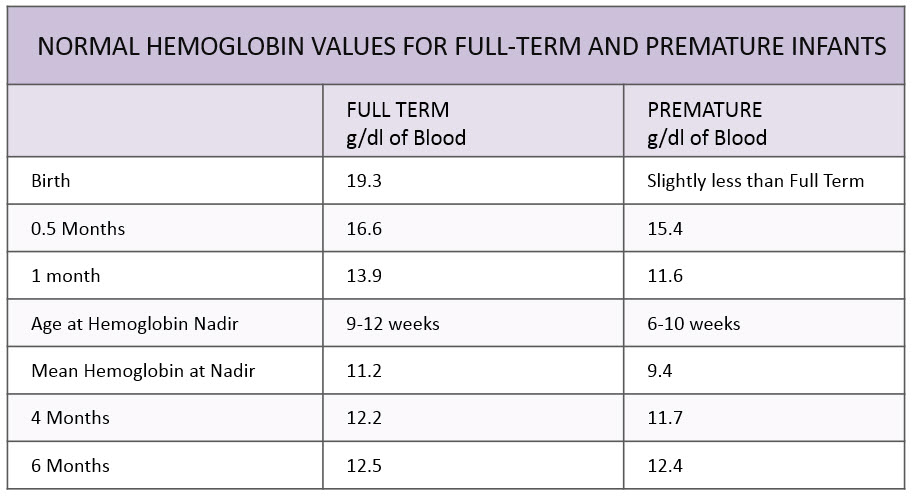
As a rule, in pregnant women, the number of lymphocytes is higher than normal, and the number of neutrophils is lower in ARVI. This condition requires immediate gentle treatment.
Low lymphocyte count during pregnancy is nothing to worry about because it is considered normal.
Otherwise, the cells would block the genes of the child’s father, and the fetus would not be able to develop normally in the womb. It is extremely important to increase the body’s defenses, protect yourself from diseases, for which you should not be outside for a long time during the hot season, and dress warmly in winter and autumn, and also try to visit places where there are a lot of people less.
Anisocytosis and poikilocytosis
Anisocytosis is indicated by a change in the size of platelets or erythrocytes, and this, in turn, indicates disorders in the body. So, if positive anisocytosis, this is a signal that the body is experiencing a lack of iron, vitamins A or B12.
Poikilocytosis is a change in the shape of red blood cells. It is noted when anemia is of high severity.
Mie – myelocytes and metamyelocytes
The norm is that the blood should not contain bone marrow cells.
When granular white blood cells are formed in the blood during gestation in excess of normal, this can cause the appearance of 1-2% of myelocytes.
Up to 3% of myelocytes and metamyelocytes in the blood during the period when the woman is in position is acceptable.
ESR – erythrocyte sedimentation rate or ROE – erythrocyte sedimentation reaction
ESR will depend on the protein composition of the blood plasma. During pregnancy, this indicator is prone to constant changes, but the norm is considered to be no higher than 45 mm / h.
In cases where an infection has entered the body or an inflammatory process is underway, this indicator increases. With iron deficiency anemia, an increase of up to 60% is acceptable.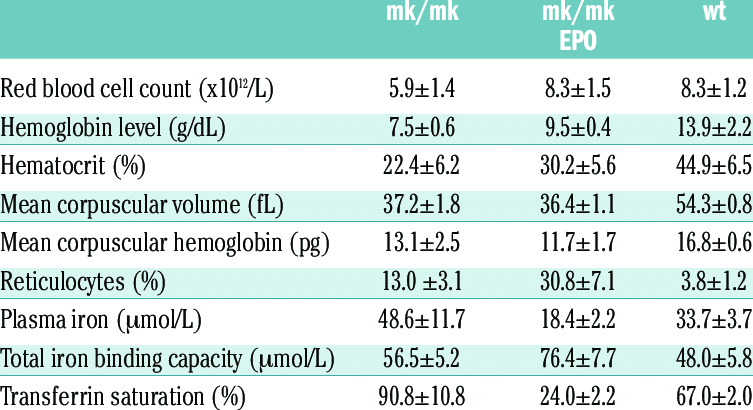 To normalize the indicators, iron-containing preparations are prescribed, as well as dietary nutrition.
To normalize the indicators, iron-containing preparations are prescribed, as well as dietary nutrition.
ORE – osmotic resistance of erythrocytes
This marker indicates the body’s ability to fight off destroyers. It is considered normal if the minimum resistance of erythrocytes in test tubes, where the solution has a concentration of 0.48-0.46%, and the maximum (complete destruction of erythrocytes) resistance at 0.34-0.32% NaCl solution.
Pori preeclampsia or when there is a risk of onset of labor prematurely, there is a decrease in the WEM (destruction of red blood cells begins at a 0.75-0.70% solution).
In cases where a woman has hypochromic anemia during pregnancy, an increase in the WRE is characteristic.
How is a CBC taken?
The analysis is given only in the morning. Do not eat before taking blood. The analysis is taken from the finger. To get the most accurate results, do not consume carbonated and alcoholic drinks, fatty foods on the day preceding the test, and on the day when it will be given, avoid physical exertion, do not take a hot bath.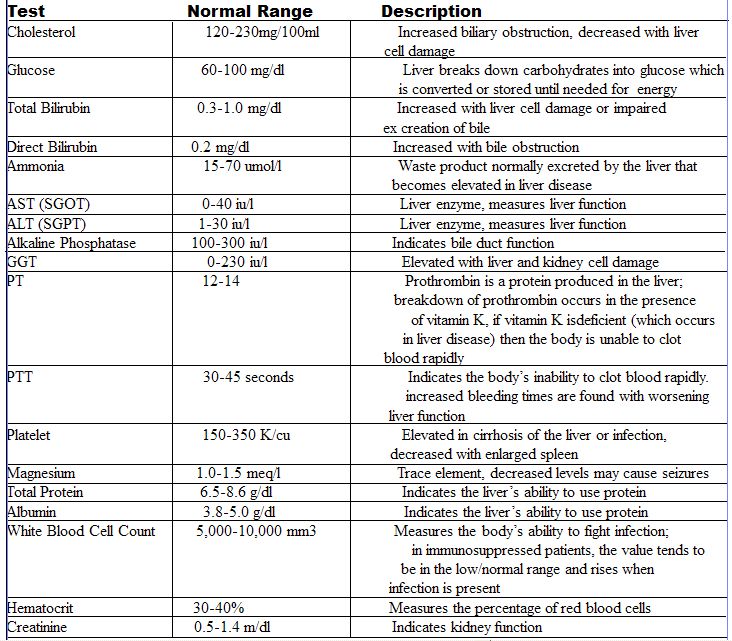 It is highly undesirable that the body is supercooled, as well as severe stress. All these factors can cause incorrect results of a general blood test.
It is highly undesirable that the body is supercooled, as well as severe stress. All these factors can cause incorrect results of a general blood test.
Anemia: an “iron” argument – articles from the specialists of the clinic “Mother and Child”
What is it
There are special cells in our blood – erythrocytes, I also call them “red blood cells”, because they are what give it such a color. Red blood cells carry oxygen from the lungs through the blood vessels to the brain and other organs and tissues. Red blood cells contain hemoglobin, a red, iron-rich protein that delivers oxygen to every cell in our body. If there is not enough iron, then the level of hemoglobin will decrease, and then our cells will begin to suffer from a lack of oxygen. This condition is called anemia.
Why is anemia unpleasant during pregnancy? Firstly, there is not enough oxygen for both the mother and the child, which means that the baby may still experience oxygen starvation (hypoxia) in utero. Secondly, the child may also develop anemia, both during pregnancy and after birth. Even with anemia, toxicosis and some other complications of pregnancy are more common. There is another important point: in childbirth, a woman always loses some amount of blood, and if she has anemia, then it can be more difficult to restore her health after giving birth.
Secondly, the child may also develop anemia, both during pregnancy and after birth. Even with anemia, toxicosis and some other complications of pregnancy are more common. There is another important point: in childbirth, a woman always loses some amount of blood, and if she has anemia, then it can be more difficult to restore her health after giving birth.
To find out the level of hemoglobin and whether or not anemia is present, a general blood test is done.
A normal hemoglobin level for a woman is 120-140 g / l. During pregnancy, the numbers are slightly different:
- 110 g/l is the lower limit of normal;
- 90-110 g/l – mild anemia;
- 70–90 g/l — medium degree of anemia;
- less than 70 g / l – severe anemia.
Why anemia occurs
In general, there are different types of anemia, but during pregnancy it almost always appears due to a lack of iron.
By itself, iron in our body is not synthesized, we get it with food or water. Therefore, if there is little of it in food or it is poorly absorbed in the gastrointestinal tract, there will be a deficiency. And pregnancy only contributes to this deficiency.
Therefore, if there is little of it in food or it is poorly absorbed in the gastrointestinal tract, there will be a deficiency. And pregnancy only contributes to this deficiency.
- Estrogens, the level of which is greatly increased during pregnancy, inhibit the absorption of iron in the intestine.
- Toxicosis and especially vomiting is another reason why iron absorption is reduced.
- During pregnancy, many women stop eating meat. They just don’t want it or it even disgusts them. And meat is the main supplier of iron to our body. The chain is simple: less meat – less iron – anemia.
- The child grows in the mother’s belly, he also needs iron for development. Where can I get him, he himself does not eat yet? Only from the mother’s body. If there is not enough iron for two, then the mother may have anemia.
- If a woman becomes pregnant again, and little time has passed between births, then her iron reserves have not yet been restored. That is why doctors recommend planning the next pregnancy two years after the previous one (so that the iron levels have time to recover).

And this is what a triple iron deficiency turns out to be: 1) mother does not eat meat or eats little, which means that less iron comes to her from the outside; 2) plus, iron in pregnant women is still poorly absorbed; 3) the child takes the iron for himself. That’s where the anemia comes from.
What it looks like
The very first symptoms of anemia are weakness, fatigue, drowsiness, dizziness, and bad mood. But all these signs are often found in expectant mothers, especially in the first trimester, when there is a sharp hormonal change and the body adapts to a new state. And a woman often thinks that these are the usual inconveniences of pregnancy. And in general, if the anemia is mild, then there may not be any symptoms (low hemoglobin is detected only with a general blood test). And only with moderate and severe forms of anemia, characteristic symptoms appear:
- The skin becomes pale, the mucous membranes also turn pale. But in itself, pale skin does not mean that there is anemia, you also need to look at the color of the mucous membranes (eyes) or nails.

- The skin dries out, it may be cracked, hair and nails become brittle. All this is due to lack of oxygen. What else can you pay attention to – in pregnant women, hair usually becomes thick, but with anemia, they can fall out, and more intensely.
- Stomatitis appears in the mouth, stings (cheilitis) on the lips. There is not enough oxygen, nutrition in the tissues is disturbed – hence these sores on the skin and mucous membranes.
- Taste and smell change: I want to sniff acetone, paints or eat chalk – this occurs due to atrophy of the taste buds of the tongue and impaired odor perception.
- The skin may not only turn pale, but also turn yellow. With iron deficiency anemia, the metabolism of carotene (vitamin A) is often disturbed. The most pronounced yellowness is in the area of the nasolabial triangle.
How to detect anemia
As we have already said, at the very beginning, anemia may not be recognized, and when it becomes apparent, the hemoglobin level may already be quite low. Therefore, all pregnant women should take a complete blood count (CBC) at least twice.
Therefore, all pregnant women should take a complete blood count (CBC) at least twice.
The first thing they look at is the hemoglobin level. If the hemoglobin in the KLA is less than 110 g / l and, in addition, the number of red blood cells decreases, then there is anemia. But this is still not enough, other indicators need to be explored.
With iron deficiency anemia, a clinical blood test will also include:
- Decrease in the color index (this is the hemoglobin content in one erythrocyte) below 0.85.
- Reduction of the diameter of erythrocytes , then the word “microcytosis” will be written in the blood test (that is, the average diameter of erythrocytes is less than the required norm). Sometimes with anemia, red blood cells will be of different sizes, the analysis will say “anisocytosis”.
- Decreased hematocrit is the balance of the volume of the liquid part of the blood and erythrocytes. It will be up to 0.
 3 or less.
3 or less.
But anemia is not always just due to a lack of iron. There is still 2% left for other reasons. Therefore, to make sure what’s the matter, they give a biochemical blood test . If it’s all about the iron, then the blood biochemistry will have the following indicators:
- decrease in serum iron – less than 12.6 µmol/l;
- increase in the total iron-binding capacity of serum (OIBC) – more than 64.4 μmol / l;
- decrease in saturation of transferrin (blood plasma protein that carries out the transport of iron ions by iron) – less than 16%.
Important point: Anemia can occur not only due to pregnancy. In general, common anemia of pregnancy develops most often in the second trimester (sometimes it can also occur at the end of pregnancy). If anemia is detected at the very beginning of pregnancy, then most likely it was before her and has nothing to do with bearing a child.
How to prevent and treat anemia
Someone will say that anemia during pregnancy is a common thing and there is nothing to worry about. Yes, this is true, 40-60% of expectant mothers have anemia, but this does not mean that you just have to sit and wait for it to appear. Anemia can be prevented, and it is much better than treating it later. Iron rises for a very long time, besides, treatment is not always well tolerated, and medicines are not cheap.
Yes, this is true, 40-60% of expectant mothers have anemia, but this does not mean that you just have to sit and wait for it to appear. Anemia can be prevented, and it is much better than treating it later. Iron rises for a very long time, besides, treatment is not always well tolerated, and medicines are not cheap.
You can start with the simplest – eat right, because iron enters the body with food. Iron is best absorbed from animal products. Therefore, to prevent iron deficiency anemia, doctors advise eating meat (beef, pork), poultry, fish or liver. But even from these products, iron will be absorbed only by 10-30% – everything here depends on the state of a particular organism. There is also iron in some plant foods: buckwheat, apples, pomegranates. Very often they are advised by supporters of everything natural and healthy. But apples or buckwheat alone cannot hold hemoglobin, although there is a lot of iron there, only about 5-7% of this microelement is absorbed. So meat is still the leader in the content and absorption of iron, and there is no need to refuse it. Well, what if the woman doesn’t want to eat it or is she a vegetarian? Then you should take multivitamins, dietary supplements or medicines with iron.
Well, what if the woman doesn’t want to eat it or is she a vegetarian? Then you should take multivitamins, dietary supplements or medicines with iron.
If anemia has already appeared, then you should not rely only on nutrition. You need to go to the doctor and start treating anemia. The doctor usually prescribes iron supplements. They are safe for the child, but many have side effects such as nausea and constipation. Therefore, the drug does not always immediately fit, sometimes you have to change it. What else do you need to know about the treatment of anemia? It is difficult to raise the hemoglobin level quickly, it usually increases after three to five weeks, so it will take a long time to wait for the results of treatment. And even when hemoglobin returns to normal, this does not mean that treatment should be stopped. You will have to take the drugs for some more time to create a supply of iron for yourself and for the child.
But even from medicines, iron may not be completely absorbed, in addition, it is not compatible with all substances. For example, calcium and magnesium reduce iron absorption. Therefore, food that contains a lot of calcium and magnesium is best eaten two hours after taking iron. How it looks in life: we don’t eat meat with milk, we don’t drink iron preparations with milk and we don’t eat a cheese sandwich with them. Caffeine and tannin also hinder the absorption of iron. So, one cup of tea halves the absorption of iron. Therefore, it is better to drink less coffee and tea during the treatment of anemia. But there are substances that improve iron absorption. This is vitamin C: in order for iron to be well absorbed, you need to get 75 mg of this vitamin daily. For good hemoglobin, folic acid is also needed, it can also be taken additionally. Therefore, foods rich in vitamin C and folic acid are eaten along with foods rich in iron: for example, after meat, you can eat an orange or cook meat with spinach.
For example, calcium and magnesium reduce iron absorption. Therefore, food that contains a lot of calcium and magnesium is best eaten two hours after taking iron. How it looks in life: we don’t eat meat with milk, we don’t drink iron preparations with milk and we don’t eat a cheese sandwich with them. Caffeine and tannin also hinder the absorption of iron. So, one cup of tea halves the absorption of iron. Therefore, it is better to drink less coffee and tea during the treatment of anemia. But there are substances that improve iron absorption. This is vitamin C: in order for iron to be well absorbed, you need to get 75 mg of this vitamin daily. For good hemoglobin, folic acid is also needed, it can also be taken additionally. Therefore, foods rich in vitamin C and folic acid are eaten along with foods rich in iron: for example, after meat, you can eat an orange or cook meat with spinach.
If there is not enough iron, then the level of hemoglobin will decrease, and then our cells will begin to suffer from a lack of oxygen.

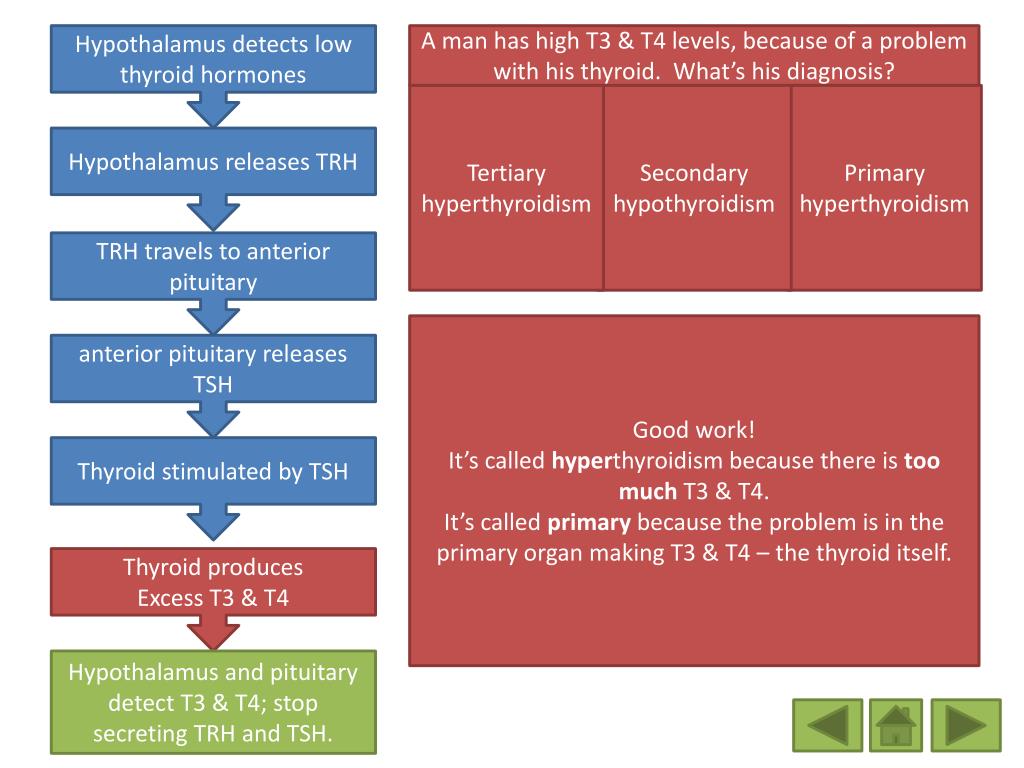

 3 or less.
3 or less.